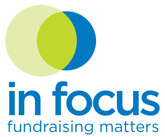Recent Posts
- Major Donors: Cultivating Relationships & Forging Strong Ties
- On Assignment in an Interim Development Role
- Planning with Intention
- Using Metrics to Understand Your Email Impact (Part 2)
- Improving Your Email Campaigns (Part 1)
- Corporations and Foundations: Tips on Connecting and Building Relationships with Institutions
- How To Connect with Donors Even When Times Are Tough
- Why Your Board Is Not Giving And How To Shift Tactics
Got Plans?
By: Nadine Gabai-Botero, CFRE, President
Updated: July 26, 2023
Originally Published: July 13, 2021
Each year around this time -- deep summer, post-July 4th -- we start planning for fall and year-end giving campaigns with our clients. You should be too. Especially this year, when we’re seeing the effects of continued economic uncertainty and many nonprofits have seen their fundraising slowing and reductions in the size and frequency of gifts.
For many in development, it’s become more and more challenging to connect with donors. Tactics that used to work (“Join me for a Zoom coffee!” or “I hope you can join us at this gathering!”) are no longer reliable. You may be reframing why giving to your organization is vital now or diversifying your communication and engagement strategies to retain and attract donors. Facing so many headwinds, it’s time to get creative, drill into your data, and make your 2023 year-end plans to get the support you need.
When to Start Planning Your End-of-Year Campaign
Today. As in July. I know it seems early. And it is. That’s the point. There are many details around a successful year-end giving campaign, especially if you plan for multi-channel efforts like direct mail, social media, Giving Tuesday, etc. You want to plan on fully launching by November or even late October. Below are some key elements to consider and strategies you may want to try this year, as well as things to do in late summer/early fall to ensure your donors feel connected to you and your organization’s mission well before their year-end solicitation arrives. The most important thing? Get started on your plan asap!
What to do Today to Boost Your End-of-Year Giving Campaign
Before we dive into what you should be doing this summer to prepare for your campaign, it’s important to think about the messaging and stewardship you should be doing now so that you’re strengthening your connection with your donors in advance of a November or December ask. From sharing updates on the impact of your membership renewals or sustainer thank you letters to making calls or sending regular emails to donors and supporters in early fall, this “pre-end-of-year” timeframe is critical. Further, in messages on your website and in your fall/winter newsletter, make sure to highlight challenges you will likely raise again in your year-end materials and focus on the donor’s role in making a difference.
One thing to note: while you may be the one driving efforts, make sure to get input and buy-in from others who connect with fundraising at your organization, including those working on major gifts, marketing/communications, events, as well as the board and development committee.
Make Your End Of Year Campaign Stand Out
To build your year-end giving campaign, build off successful efforts from what you’ve done before. I use a spreadsheet that details key elements, using questions to guide action steps:
Decide on the message.
What do you want to convey to your donors about the year, your goals, and how they can help? Will you have a specific fundraising dollar goal for year-end (it’s a best practice to have one!) How will you focus attention on what your constituents need most and how you are able to provide it? Most importantly -- in all your messages -- make sure your donors/prospects are central to your story. Their support makes your work possible!
Campaign Details Matter
Can you secure a match challenge?
Studies have shown that having a match can increase giving by 20% or more, so if you can identify a donor willing to put up a match - make the ask! If possible, pool matches together to create a bigger challenge. And, think about timing: some match challenges could time out in November or early in December, while others could focus on Dec. 31. This is a great way to boost giving early and later in your campaign.
Do you want to send a mailed letter?
If so, will it be to a majority of your list or just a segment of your major donors/prospects? How will the letter and envelope design be distinctive? A plain envelope at year-end is much more likely to end up in the recycle bin, so think about how you’ll stand out. Do you need to secure a mail house? If so, do this soon! And make sure your envelope has a live stamp, and you don’t use labels for the recipient (studies show using a postage meter will lower your mail open rates). Think through your timing for direct mail, too: earlier in November can have a better chance of getting noticed.
How many emails will you send, and how much can you segment?
While there is no set “magic number” of emails to send, you should plan on multiple messages that build on each other to tell your story, culminating with a few messages on the last few days of the year. And Dec. 31st is the biggest giving day of the year, so plan to send at least 2-3 messages that day.
What’s your Giving Tuesday plan?
Each year this worldwide giving day breaks new records. Given the power to galvanize support in late November/early December, make the most of Giving Tuesday by coming up with a goal and securing a match just for that day; developing a story/graphics to use social media effectively; incorporating Giving Tuesday into a mailed piece in advance of the day (if you have the budget); and reaching out to some key supporters with bigger followings in advance of the day and ask them to amplify your messages.
How will you use social media to drive giving?
Some nonprofits have a bigger following than others, so if you don’t have a big presence, you may not think it’s worth it to incorporate Facebook, Instagram, or Tik Tok in your year-end plans. If you have a social presence at all, we suggest including this as a way to inform your followers, build on the letter/emails you're sending, and incorporate a creative element into your messages.
Who will you call?
Typically, we suggested phone outreach for major donors, but depending on the willingness of your board or others to help out, you could expand that list. Make sure to pull a LYBUNT list (donors who gave Last Year But Unfortunately Not This year) to be clear about who should get an extra reminder about how much their support matters!
What is your follow-up plan?
By the second week of December, all of your emails for the month should be written and in the queue to send. That should leave time for personalized outreach by you, key staff, and board members. This could be emails or calls to folks who haven’t responded or new social media messages crafted on the fly to freshen up the campaign. Remember that follow-up is key to a successful campaign, so keep your eye on responses, look for donors/prospects you expected to hear from and reach out!

